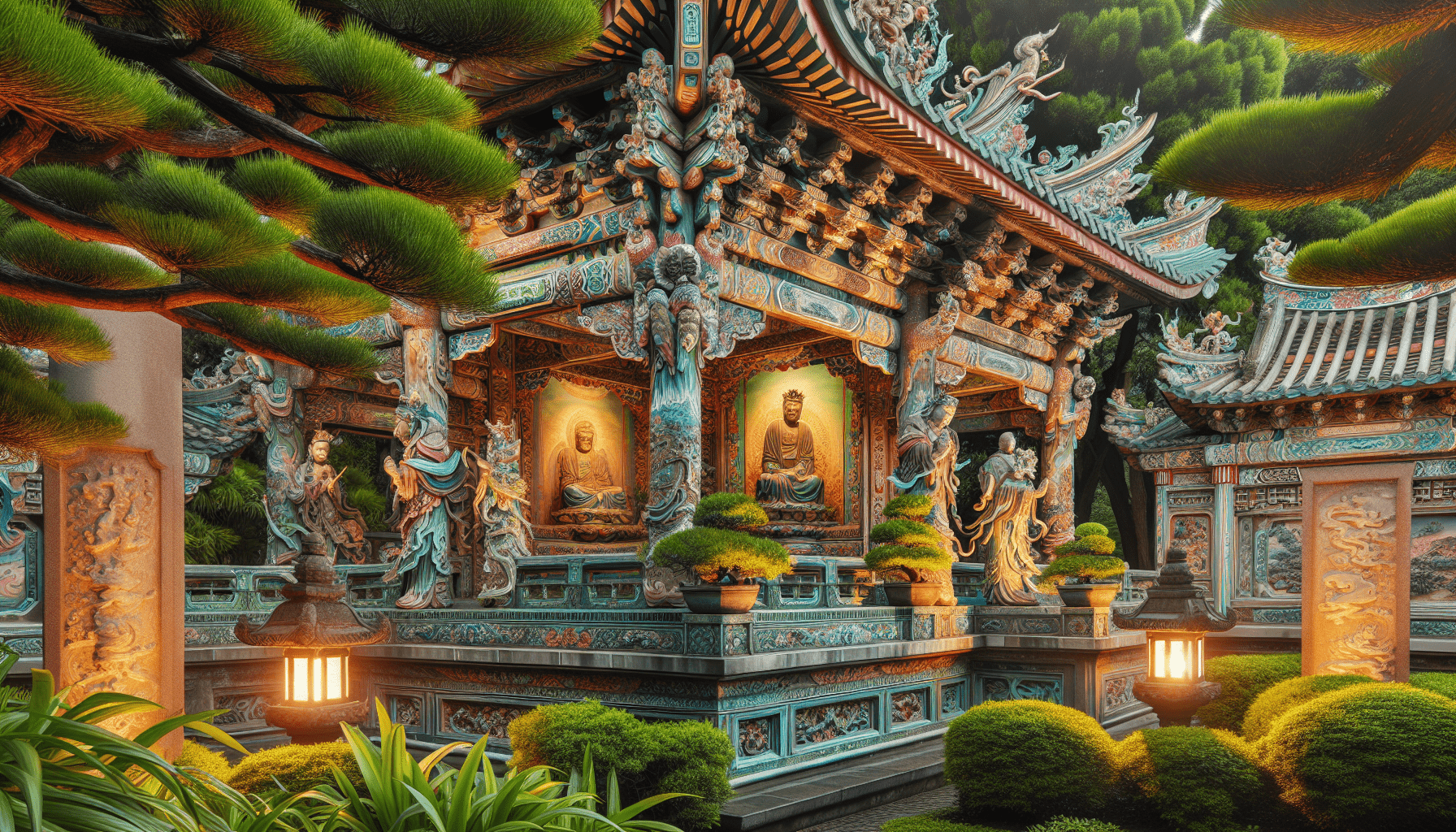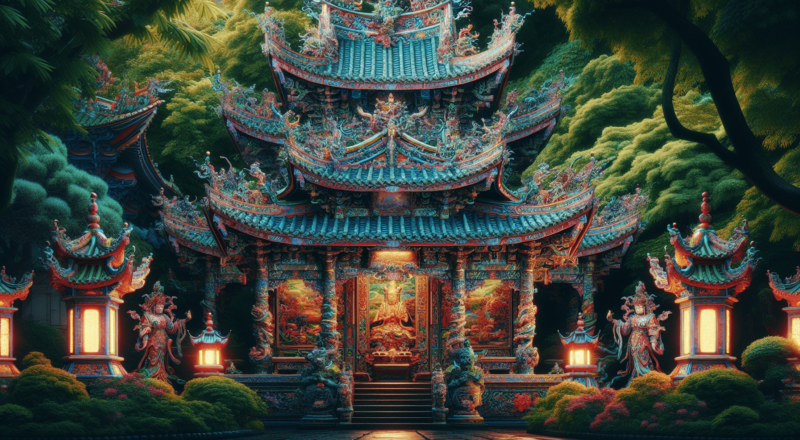Have you ever wondered what secrets lie behind the ornate facades and intricate details of Ho Chi Minh City’s pagodas and temples? These sacred places, rich in history and spiritual significance, offer a glimpse into the vibrant culture and traditions of Vietnam. If you’re planning a visit, you’re in for a treat! Let’s embark on a journey through the must-visit pagodas and temples in this bustling city.
The Importance of Pagodas and Temples in Ho Chi Minh City
Pagodas and temples are not just places of worship in Vietnam; they are central to the cultural and spiritual life of the community. Ho Chi Minh City, formerly known as Saigon, is home to numerous sacred sites that reflect enduring traditions. Each temple and pagoda has its own unique architecture and history, presenting a blend of indigenous beliefs and influences from Buddhism, Taoism, and Confucianism.
Visiting these sites provides an opportunity to immerse yourself in the local customs, witness religious practices, and appreciate the artistry of Vietnamese architecture. Whether you’re drawn by the spiritual significance or simply wish to admire the beauty, these sites are worth your time.
Thien Hau Pagoda
Overview
Thien Hau Pagoda, also known as the Lady of the Sea Pagoda, is one of the oldest temples in Ho Chi Minh City. Located in the bustling District 5, it dates back to the late 18th century and is dedicated to Thien Hau, the goddess of the sea.
Architecture and Features
The architecture of Thien Hau Pagoda stands out with its vibrant colors and intricate details. As you approach, notice the elaborate red gates adorned with dragon motifs. Inside, the pagoda features a large altar where you’ll find the statue of the goddess and various offerings.
Visitors often light incense and make wishes while reveling in the serene atmosphere. The pagoda also boasts a series of smaller shrines, each paying homage to different deities.
Cultural Significance
This pagoda serves as a place for local fishermen and sailors to pay respects before embarking on their journeys. It’s especially vibrant during festivals, where you can witness traditional rituals and vibrant celebrations.
Jade Emperor Pagoda
Overview
The Jade Emperor Pagoda, or Phuoc Hai Tu, is a gem in Ho Chi Minh City’s religious landscape. Built in 1909, this pagoda is dedicated to the Jade Emperor, the supreme deity in Taoism.
Architecture and Features
As you step inside, prepare to be captivated by the stunning architectural designs. The pagoda is adorned with intricate carvings and statues, showcasing both Taoist and Buddhist influences. The interior glows with a warm light from countless incense sticks, creating a peaceful ambiance.
One of the most notable features is the statue of the Jade Emperor, surrounded by colorful imagery of gods, goddesses, and mythical creatures. Look closely, and you can find depictions of various stories and legends, each telling a tale of morality and virtue.
Cultural Significance
The Jade Emperor Pagoda is not just a tourist destination; it is a living place of worship. Local devotees come to pray for prosperity and protection. Festival times fill the area with celebratory music, dance, and ceremonial offerings, making it an enriching experience for visitors.
Giac Lam Pagoda
Overview
Situated in Tan Binh District, Giac Lam Pagoda is the oldest pagoda in Ho Chi Minh City, established in 1744. This serene place embodies the essence of Vietnamese Buddhism and offers a tranquil escape from the vibrant city life.
Architecture and Features
The pagoda features classic Vietnamese architectural styles, with a multi-tiered roof and ornate decorative details. One striking aspect is the tall bonsai trees that surround the pagoda, creating a calm environment.
As you wander through the complex, you’ll find statues of Buddha and bodhisattvas, beautifully crafted and telling stories of faith and compassion. The tranquil gardens and pathways invite you to take a moment of reflection amidst the spiritual energy.
Cultural Significance
Giac Lam Pagoda plays an important role in the local Buddhist community. Regular ceremonies and festivals attract many participants, offering a deeper understanding of the practices and traditions of Vietnamese Buddhism.

Vinh Nghiem Pagoda
Overview
Vinh Nghiem Pagoda is a prominent Buddhist temple that reflects the influence of both Vietnamese and Indian architecture. Established in the early 1960s, its construction was inspired by the famous pagodas in the North of Vietnam.
Architecture and Features
This pagoda is an architectural statement with its tall towers and beautifully carved motifs. The main hall features a massive statue of the Buddha, which draws the attention of every visitor.
The pagoda also houses several smaller shrines and Buddha statues, each with a unique design and significance. The gardens surrounding the temple add a sense of tranquility, making it a perfect spot for meditation and reflection.
Cultural Significance
Vinh Nghiem Pagoda is a central hub for Buddhist activities in the city. You can often find monks performing rituals and ceremonies, providing visitors with a glimpse into their daily practices and spirituality.
Mariamman Hindu Temple
Overview
The Mariamman Hindu Temple is a rare find in Ho Chi Minh City, showcasing the rich Indian heritage in Vietnam. Built in 1885, this vibrant temple is dedicated to the goddess Mariamman, known for her healing powers.
Architecture and Features
As you approach the temple, you’ll be mesmerized by the colorful sculptures adorning its facade. The vivid imagery of deities and mythological creatures reflects the exuberance of Hindu artistry.
Inside, the altar is adorned with beautiful idols, and the air is filled with the scent of flowers and incense. Visitors are welcome to participate in rituals, and the atmosphere becomes vibrant during festivals.
Cultural Significance
The Mariamman Hindu Temple serves as a focal point for the Indian community in Ho Chi Minh City. Festivals here are lively and colorful, and they provide an opportunity for cultural exchange and understanding between different communities.
Phung Son Tu Pagoda
Overview
Phung Son Tu Pagoda, located in District 11, is a lesser-known but equally captivating temple. Established in the late 19th century, it serves as a testament to the adaptability and perseverance of Vietnamese culture.
Architecture and Features
The pagoda features traditional architecture blended with modern elements. Inside, you can find an impressive statue of the Buddha, surrounded by stunning mural paintings that illustrate various Buddhist legends.
A significant feature of Phung Son Tu is its tranquil courtyard, where you can find locals practicing Tai Chi. The peaceful environment makes it an ideal spot to unwind and connect with the community.
Cultural Significance
Phung Son Tu plays a vital role in the spiritual lives of the people living nearby. The temple holds regular ceremonies, inviting visitors to witness the dedication and faith of its practitioners.
Tam Son Pagoda
Overview
Tam Son Pagoda, or Three Mountains Pagoda, is well-loved for its peaceful atmosphere and scenic location. Nestled in a small village on the outskirts of Ho Chi Minh City, it offers visitors a serene escape from the hustle and bustle.
Architecture and Features
This pagoda is renowned for its beautiful surroundings and well-kept gardens. The architecture is elegant, with classic Vietnamese design elements. Inside, you’ll discover intricate altars and many depictions of Buddhist teachings, all marked with the gentle scent of incense.
A highlight here is the stunning view of the surrounding hills, providing a backdrop that enhances the experience of visiting the pagoda.
Cultural Significance
Tam Son Pagoda is a place where locals often come to pray and reflect. You might witness families paying homage during special occasions, giving you an authentic experience of local traditions.
Ba Thien Hau Pagoda
Overview
Located near the bustling Ben Thanh Market, Ba Thien Hau Pagoda is another notable site dedicated to the goddess Thien Hau. Its central location makes it easily accessible for visitors exploring the city.
Architecture and Features
The pagoda features traditional Chinese architectural influences, characterized by dragon motifs and beautiful ceramic tiles. Inside, you’ll find various altars decorated with offerings where worshippers come to pray.
The pagoda is smaller than some of its counterparts but offers an intimate atmosphere that allows for deep connection with the spirituality of the place.
Cultural Significance
During festivals, the pagoda comes alive with celebrations, drawing crowds of devotees. This vibrant atmosphere showcases the cultural and spiritual richness of Ho Chi Minh City.
Quan Am Pagoda
Overview
Quan Am Pagoda, also known as the Avalokiteshvara Pagoda, is dedicated to the bodhisattva of compassion. It is a tranquil place that offers a haven for individuals seeking peace and reflection.
Architecture and Features
The pagoda boasts beautiful traditional architecture, with elaborate carvings and serene gardens. Inside, the statue of Quan Am is the focal point, surrounded by offerings and incense.
The surroundings are adorned with trees and small water features that create a calming environment, and visitors often take the time to meditate or relax in this serene space.
Cultural Significance
Quan Am Pagoda plays a vital role in the lives of many devotees. It is a gathering place for those looking to connect with their spirituality and offers various programs and workshops that promote compassion and kindness.
Conclusion
As you navigate through the bustling streets of Ho Chi Minh City, take a moment to visit these remarkable pagodas and temples. Each site offers a unique glimpse into the spiritual and cultural fabric of the city. Whether you are seeking spiritual enlightenment, cultural understanding, or simply a beautiful place to unwind, there’s something for everyone.
The stories, rituals, and architectural wonders found in these sacred spaces will leave you with lasting memories of your time in Ho Chi Minh City. So, as you plan your journey, make sure to include these must-visit pagodas and temples in your itinerary. You’ll surely create unforgettable experiences that connect you with the heart and soul of Vietnam.
